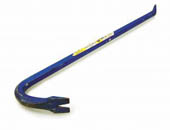
Purpose
To demonstrate how levers use force.
Additional information
The principle behind levers is leverage, which is derived using Newton's laws of motion. These laws state:
-
First Law: "A particle will stay at rest or continue at a constant velocity unless acted upon by an external unbalanced net force."
-
Second Law: "F = ma: the net force on an object is equal to the mass of the object multiplied by its acceleration."
-
Third Law: "Every action has an equal and opposite reaction."
The work done through use of a lever can be calculated by force times distance. The stationary point of a lever is known as its fulcrum. The area where force is applied is called the effort. The resulting effect of applying force on a source is called the load. To use a lever to lift or pull a certain amount of weight, the distance between the fulcrum and the area where the force is applied must be twice the distance between the weight and the fulcrum.
Sponsored Links
Required materials
Estimated Experiment Time
Less than 10 minutes.
Step-By-Step Procedure
- 1. Use your hammer to hit a nail into a piece of wood. Hit it so it's about 2/3rds deep into the wood.
- 2. Try to pull the nail out only using your hands and fingers. What happens?
- 3. Now use the end to he hammer to pull the nail out of the wood. What happens?
Note
Get the help of an adult for this experiment.
Observation
Why do you suppose you were unable to pull the nail out with your hands? Why did it work using the back of the hammer? Can you explain the science that makes this experiment work?
Result
The back-end of the hammer acts as a lever, which is a simple machine used to overcome resistance at a second point by application of force. When you pulled out the nail with the hammer, you put in the same amount of effort as the load of the nail, and so were able to pull it out.
Sponsored Links
Take a moment to visit our table of Periodic Elements page where you can get an in-depth view of all the elements,
complete with the industry first side-by-side element comparisons!